
Picture this: You’re in an elevator with a potential client. You have only a few seconds to make an impression that could lead to a lucrative contract. Nerve-wracking, right? It’s a scenario every freelancer and digital agency dreads but inevitably faces. Whether you’re caught off guard at a networking event or scheduled for a formal meeting, knowing how to pitch a client effectively can make all the difference. You might wonder how some people nail these pitches effortlessly while others struggle to get their message across.
The problem often lies in not being prepared or not having a clear, concise way to present your value proposition. You might have the skills, the experience, and the perfect solution to your client’s problem, but if you can’t communicate that effectively in a short amount of time, you might lose the opportunity. This article will guide you through the art of the perfect elevator pitch with five essential tips that will help you pitch a client in a way that they can’t refuse.
Let’s dive into the specifics of what client pitching is, why it’s crucial, and how mastering it can elevate your freelance or agency business to new heights.
What is Client Pitching and Why is it Important?
Client pitching is the art of presenting your services or products to a potential client in a way that highlights their value and persuades the client to engage with you. It’s a critical skill for freelancers and digital agencies because it’s often the first step in securing new business. A well-crafted pitch can open doors to lucrative projects, establish long-term partnerships, and set you apart from the competition.
An elevator pitch, in particular, is a brief, persuasive speech that you use to spark interest in what you or your organization does. It should be concise enough to deliver during a short elevator ride, hence the name. For freelancers and digital agencies, being ready with a compelling elevator pitch is essential. You never know when you’ll meet a potential client, and having a polished pitch can mean the difference between a new project and a missed opportunity.
Your elevator pitch should communicate who you are, what you do, and why it matters to the client, all within 30 to 60 seconds. It’s not just about summarizing your services but about conveying the unique value you bring to the table in a way that resonates with your audience. Understanding how to pitch to clients effectively ensures that you’re always ready to make a strong first impression, no matter the situation.
Tip 1 – Client Portal
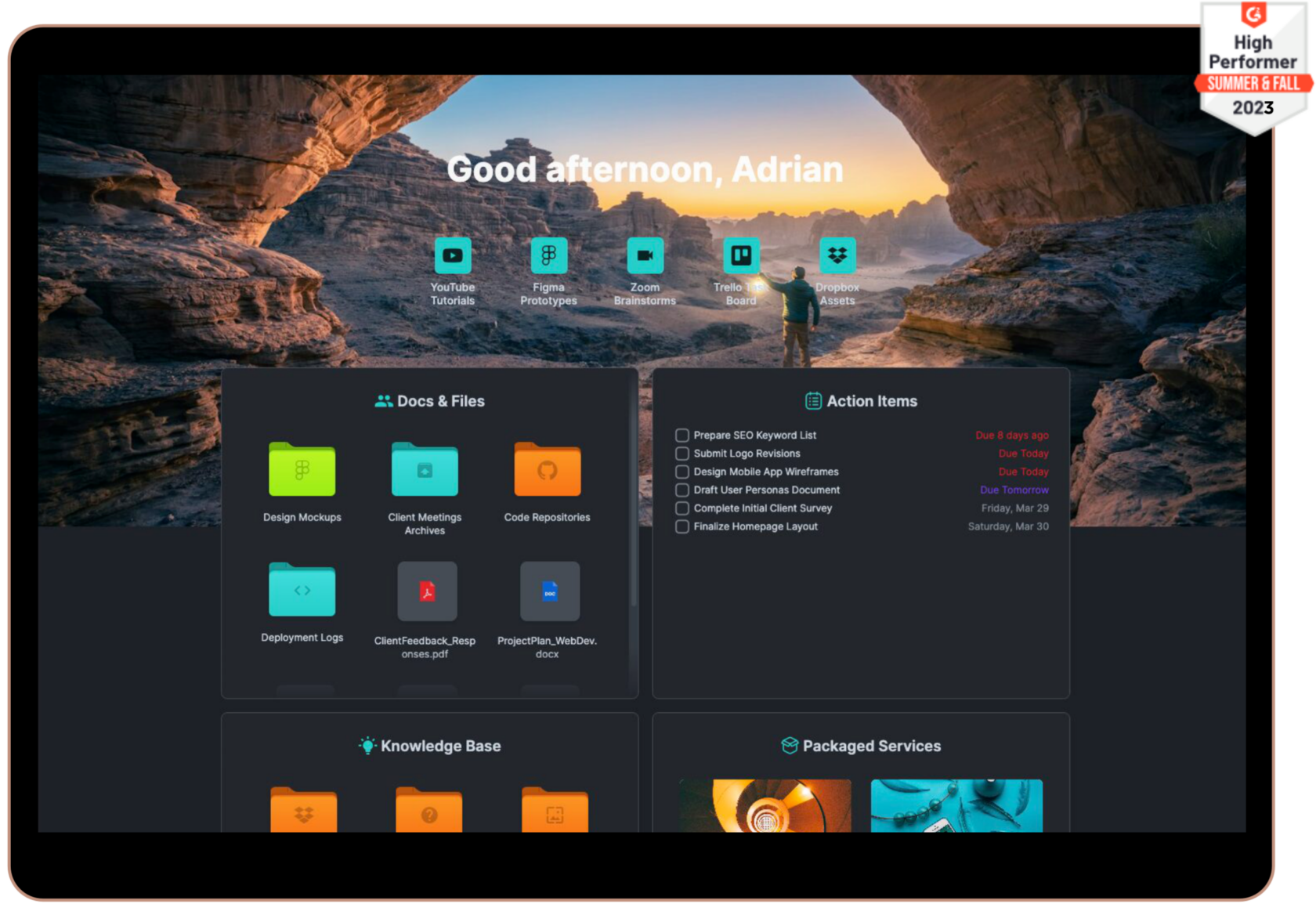
One of the most effective tools you can use to improve your client pitching is a client portal. A client portal is a secure, online platform where you can share documents, manage projects, and communicate with clients. For freelancers and digital agencies, a client portal can streamline your workflow and make it easier to keep all your client-related information organized in one place.
Using a client portal like SuperOkay can be a game-changer when it comes to pitching clients. Here’s why:
1. Organization: A client portal allows you to keep all your documents, project details, and communication in one centralized location. When you’re preparing for a pitch, having all this information readily accessible can help you collect your thoughts and present a coherent and compelling case to your client.
2. Professionalism: Presenting your materials through a client portal can make you appear more professional and organized. Clients are likely to be impressed by the streamlined experience and the ease with which they can access the information they need.
3. Efficiency: With all your information in one place, you can quickly find and reference past work, proposals, and other relevant documents during your pitch. This efficiency can help you stay focused and ensure that your pitch covers all the critical points without unnecessary delays.
SuperOkay, in particular, offers an intuitive and user-friendly client portal that can enhance your pitching process. With SuperOkay, you can create customized dashboards for each client, making it easy to showcase your work, track project progress, and communicate effectively. The platform’s flexibility allows you to tailor the experience to each client’s specific needs, making your pitches more personalized and impactful.
By integrating a client portal like SuperOkay into your workflow, you can significantly enhance your ability to pitch clients effectively. The organization, professionalism, and efficiency it brings to your process will not only make your pitches more compelling but also increase your chances of securing new business.
🔑 Key Features
• Simple User Interface: Clean, intuitive interface that is easy for clients to navigate
• Fully Customizable: Tailor the look and functionality of the portal to fit your brand and client needs
• Embedded Tools: Features integrations with other tools via “embeds”
• Storage: 1TB with Business Plan
💰 Pricing
Price: Starts at 9$/month (2GB to 1TB, depending on plan)
Free Tier: Yes (500MB)
🧐 Why SuperOkay?
SuperOkay is loved by its users for its exceptional usability and comprehensive feature set, making it a great choice for agencies looking for an easy to use yet powerful client portal.
What sets SuperOkay apart is its ability to combine ease of use with great functionality, making it a simple client portal that does not compromise on features.
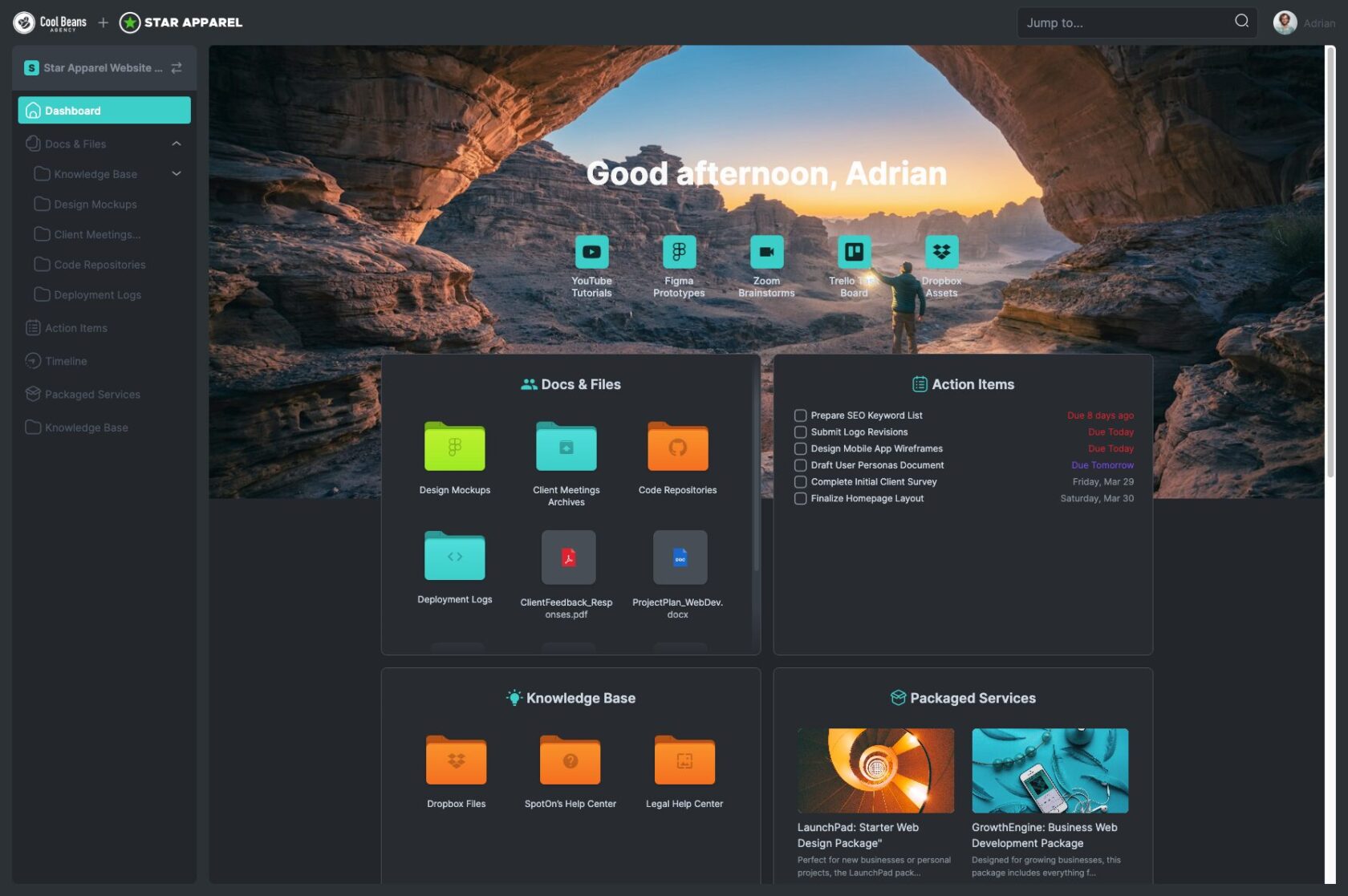
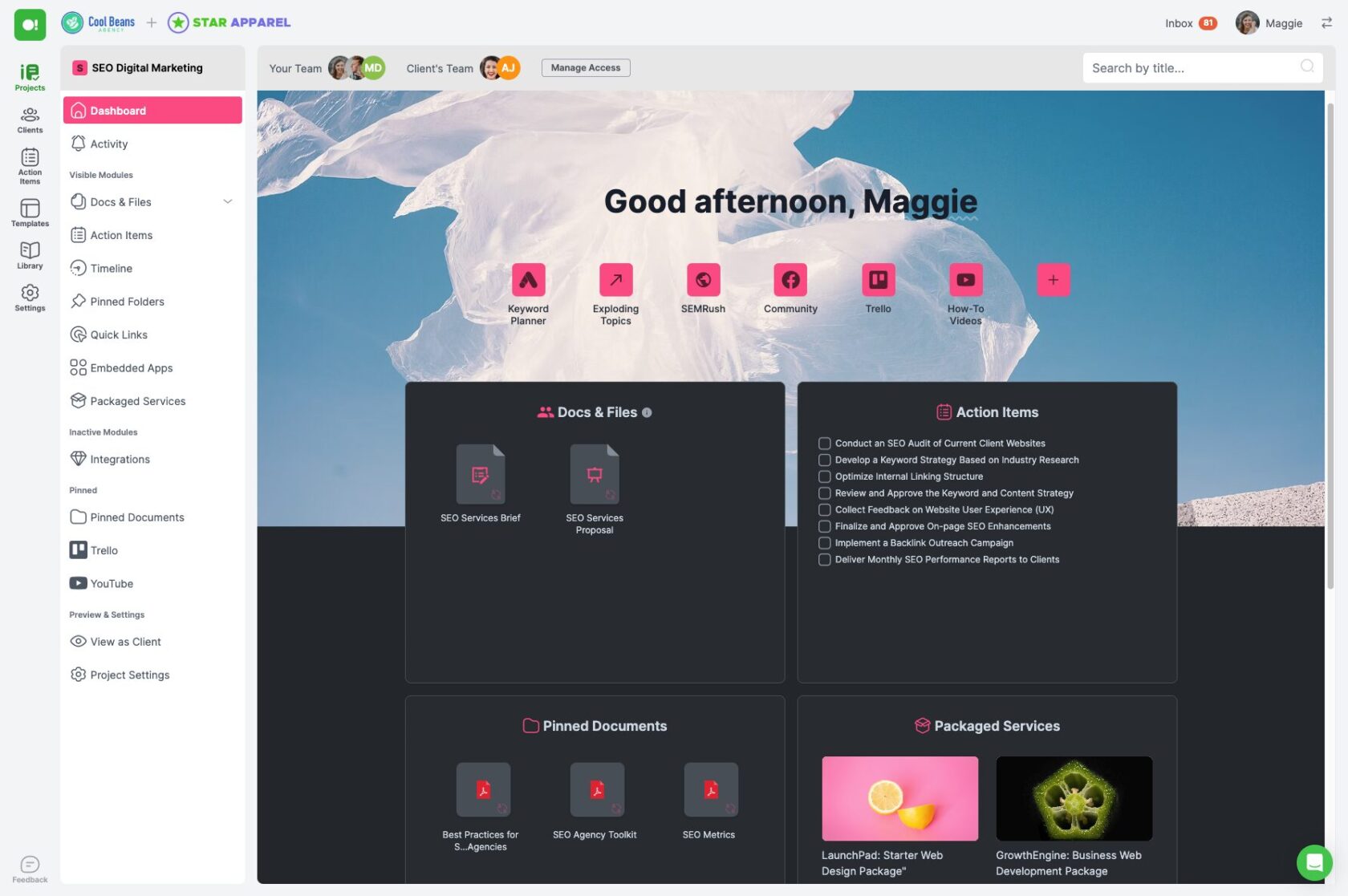
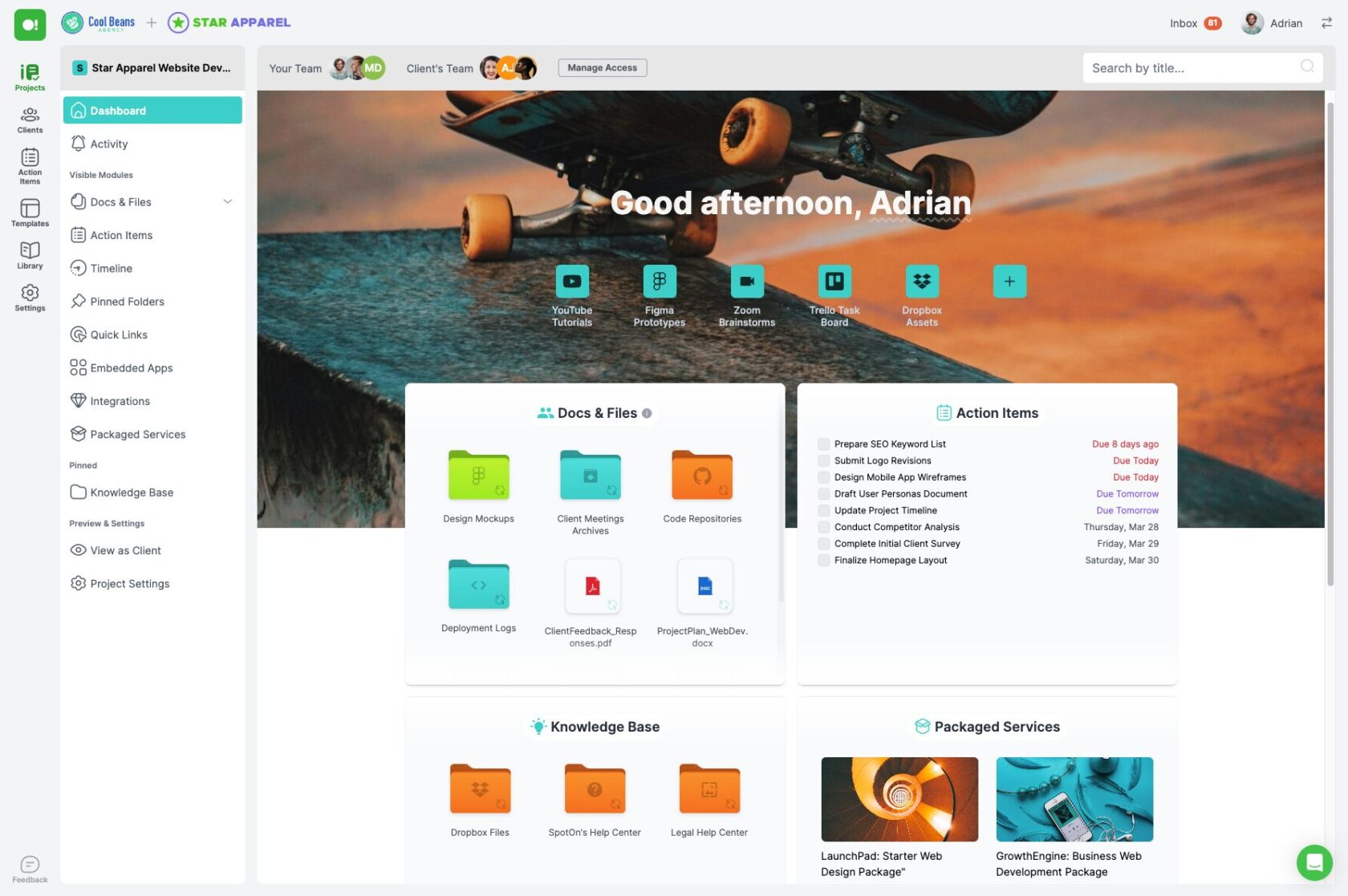
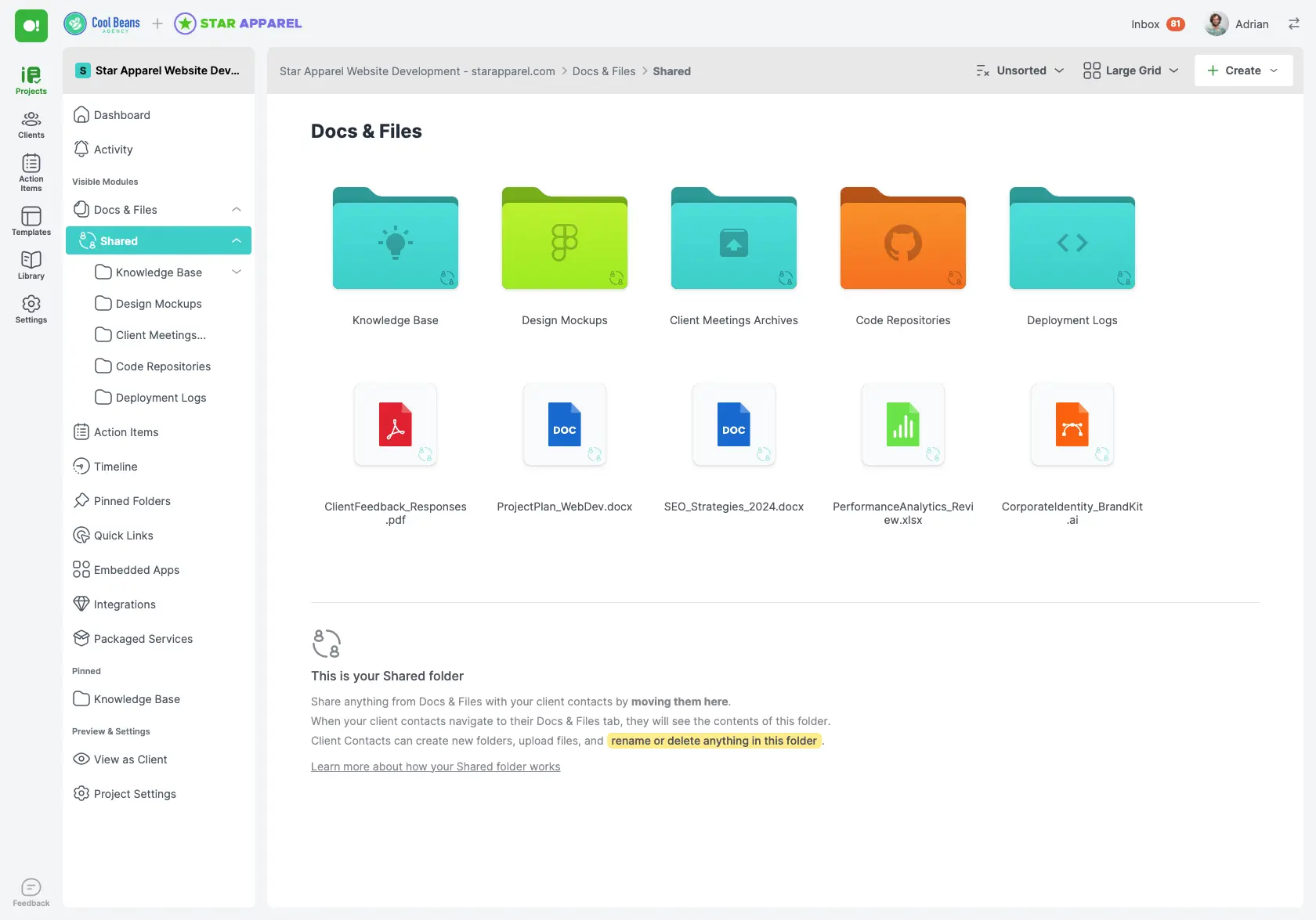
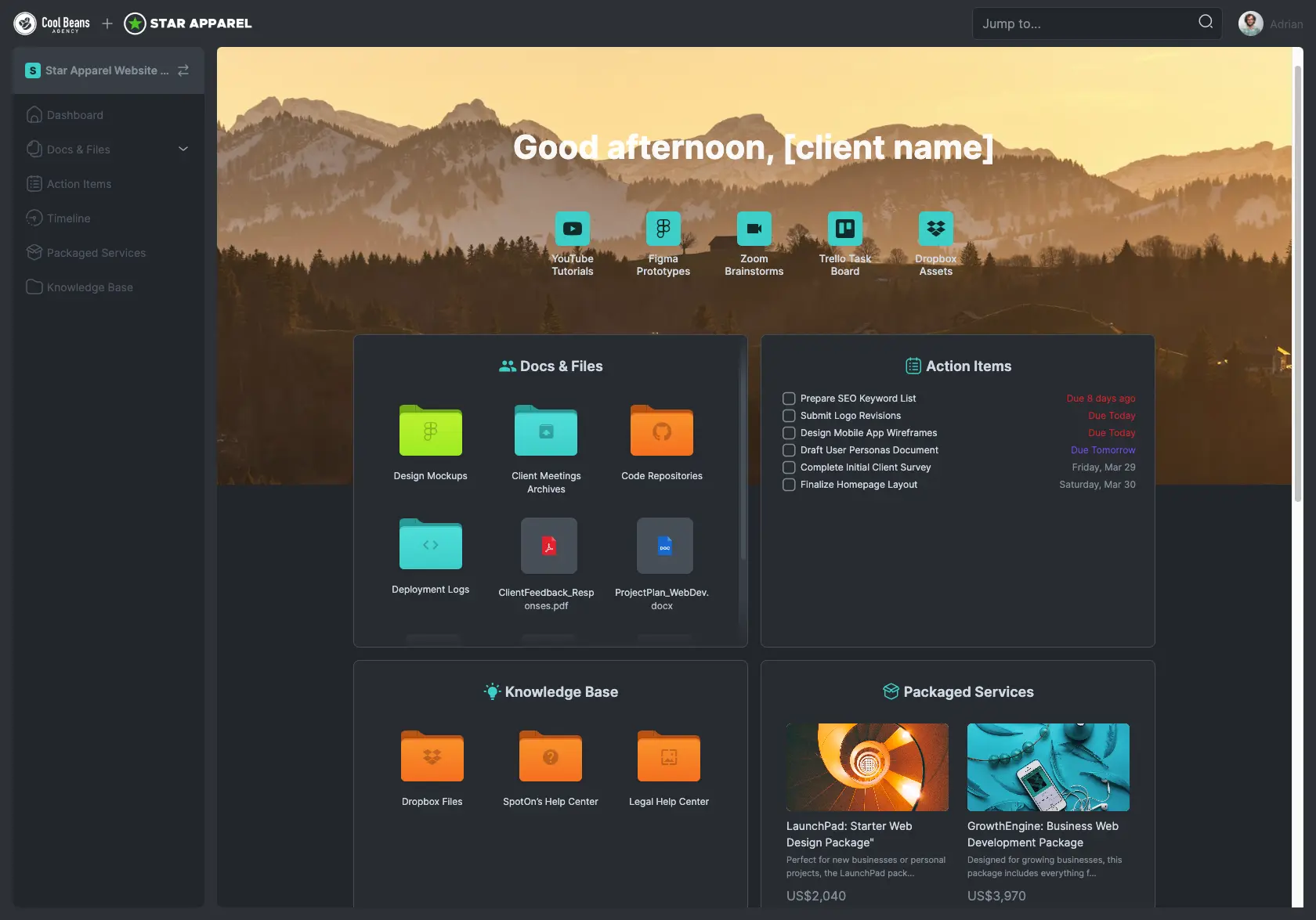
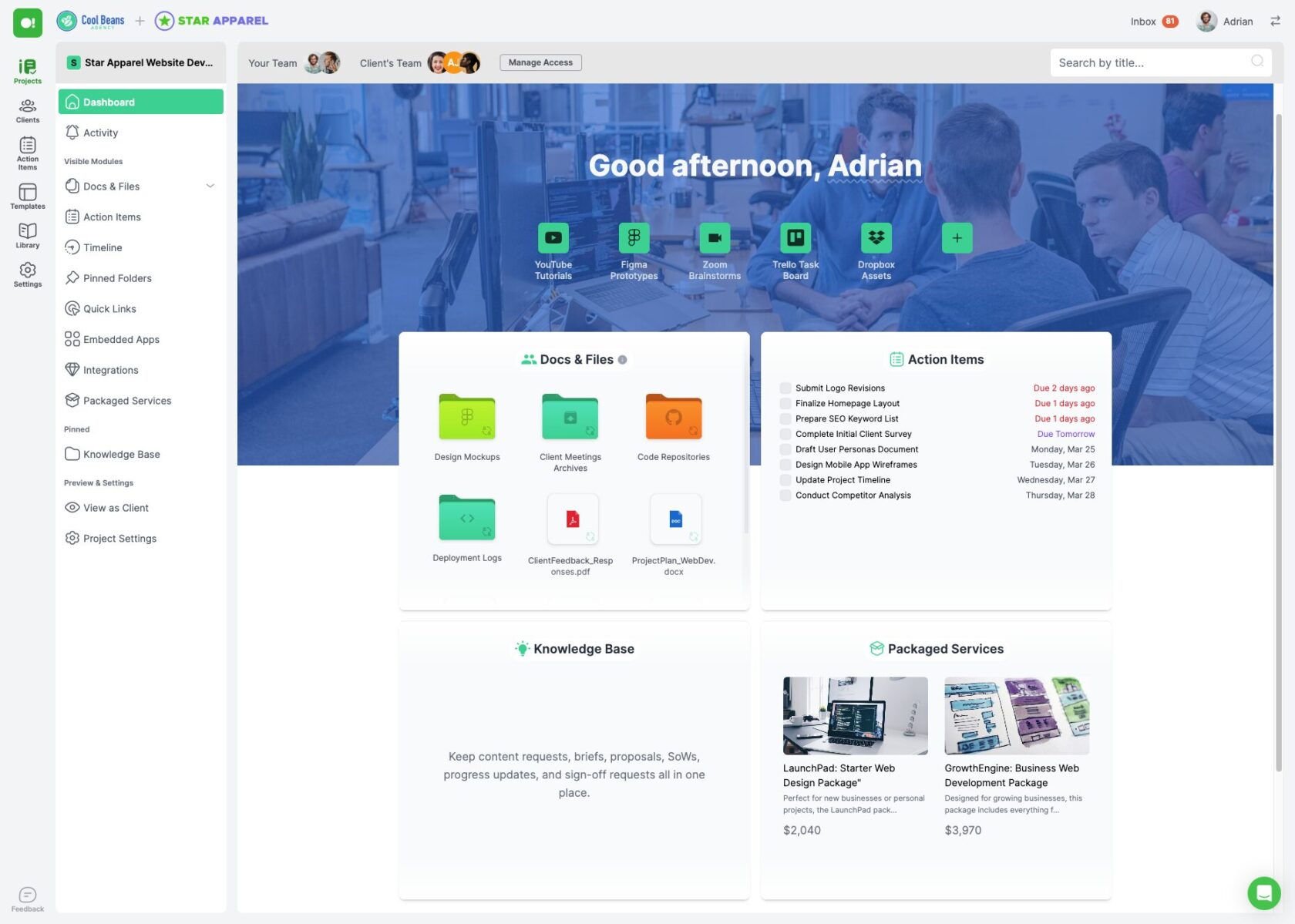
Tip 2 – Know Your Audience
Understanding your audience is fundamental to any successful pitch. When you know who you’re pitching to, you can tailor your message to address their specific needs and concerns. This customization shows that you’ve done your homework and that you genuinely care about solving their problems, not just selling your services.
Before your pitch, research your potential client thoroughly. Understand their business model, their pain points, and what they value most. Look into their industry trends and competitors to see where they might need the most help. By gathering this information, you can craft a pitch that speaks directly to their unique situation.
When pitching, highlight how your services can specifically address the issues they are facing. Use language and examples that resonate with their experience. For instance, if you’re pitching to a tech startup, focus on your innovative solutions and technical expertise. If it’s a more traditional business, emphasize reliability, and efficiency.
Knowing your audience also means being aware of their communication style. Some clients might prefer a straightforward, data-driven approach, while others might respond better to a more narrative style that tells a story. Adapting your pitch to their preferred style can make your message more engaging and persuasive.
Ultimately, the more you know about your audience, the more you can connect with them on a personal level. This connection can make your pitch more memorable and increase the likelihood of securing their business.
Tip 3 – Practice, Practice, Practice
The old adage “practice makes perfect” holds especially true when it comes to pitching. Even the most well-prepared pitch can fall flat if it isn’t delivered confidently and smoothly. That’s why practicing your pitch is crucial. The more you practice, the more comfortable and natural you’ll become, which will help you make a stronger impression.
Start by writing out your pitch in full. This will help you organize your thoughts and ensure that you cover all the important points. Once you have a script, practice delivering it out loud. Pay attention to your pacing, tone, and body language. Aim to come across as confident, enthusiastic, and approachable.
It can be helpful to practice in front of a mirror or record yourself so you can review your performance and identify areas for improvement. Better yet, practice in front of friends or colleagues who can provide constructive feedback. They might catch things you miss, like awkward phrasing or nervous habits.
Another effective strategy is to simulate real-life pitching scenarios. Practice pitching in different settings, such as a formal meeting room, a casual coffee shop, or even an elevator. This will help you become more adaptable and prepared for any situation.
Remember, the goal of practicing is not to memorize your pitch word for word but to become so familiar with the material that you can deliver it smoothly and confidently, even if you need to make adjustments on the fly. The more you practice, the more polished and professional your pitch will be.
Tip 4 – Focus on Benefits, Not Features
When pitching a client, it’s easy to get caught up in talking about the features of your service or product. However, clients are more interested in how those features will benefit them. Shifting your focus from features to benefits can make your pitch more compelling and relevant to the client’s needs.
Features describe what your product or service does. Benefits, on the other hand, explain why those features matter to the client. For example, instead of saying, “Our software has a user-friendly interface,” you could say, “Our software’s user-friendly interface will save you time and reduce the learning curve for your team, allowing them to be productive from day one.”
To effectively communicate benefits, start by identifying the specific problems your client is facing. Then, link each feature of your service or product to a concrete benefit that addresses those problems. This approach helps the client see the value in what you’re offering and how it can directly improve their situation.
Using real-life examples and case studies can also help illustrate the benefits of your services. Share success stories from past clients that highlight the positive outcomes they’ve experienced as a result of working with you. This not only provides social proof but also helps the client envision similar benefits for their own business.
By focusing on benefits, you make it easier for the client to understand the value of your services and how they can help them achieve their goals. This client-centric approach can make your pitch more persuasive and increase your chances of winning their business.

Tip 5 – Tell a Compelling Story
People are naturally drawn to stories. They help us connect emotionally and understand complex concepts more easily. When pitching a client, incorporating a compelling story can make your presentation more engaging and memorable.
A good story can illustrate how your services have helped others, making your pitch more relatable and demonstrating the tangible benefits you provide. Start with a problem your previous client faced, describe the solution you offered, and highlight the positive outcomes. This narrative approach not only captures attention but also helps the client envision how you can address their specific needs.
When crafting your story, focus on the client’s journey from challenge to success. Use real data and testimonials to add credibility. Make sure the story is concise and relevant to the potential client’s situation. By sharing a compelling story, you can create a stronger emotional connection with your client and leave a lasting impression.
| Tip | Description |
| Client Portal | Using a client portal like SuperOkay can streamline your workflow and make pitching more efficient by keeping all documents and communications in one place. |
| Know Your Audience | Research your potential client thoroughly to tailor your pitch to their specific needs and communication style. |
| Practice, Practice, Practice | Regular practice helps you deliver your pitch confidently and smoothly, adapting to different scenarios. |
| Focus on Benefits, Not Features | Highlight how your service’s features translate into concrete benefits that address the client’s problems. |
| Tell a Compelling Story | Use storytelling to illustrate the positive outcomes of your services and create an emotional connection with your client. |
Conclusion
Mastering the art of pitching a client can significantly boost your freelance or agency business. By using a client portal like SuperOkay to organize your materials, understanding and tailoring your pitch to your audience, practicing regularly, focusing on benefits rather than features, and telling compelling stories, you can create powerful and persuasive pitches. These tips will help you make a lasting impression on potential clients and increase your chances of winning new business.
Frequently Asked Questions
How do I know if my elevator pitch is effective?
An effective elevator pitch clearly communicates who you are, what you do, and why it matters to the client. Practice delivering it and seek feedback to ensure it resonates with your audience.
How can I improve my confidence when pitching a client?
Practice is key to building confidence. Regularly rehearse your pitch, seek feedback, and simulate real-life pitching scenarios to become more comfortable and natural.
What should I include in my elevator pitch?
Your elevator pitch should include a brief introduction of yourself, a concise description of your services, and a clear explanation of the benefits you offer to the client.
Why is it important to focus on benefits rather than features?
Focusing on benefits helps the client understand the value of your services in addressing their specific problems, making your pitch more relevant and compelling.
How can storytelling enhance my pitch?
Storytelling makes your pitch more engaging and memorable by illustrating real-life examples of how your services have helped others, creating an emotional connection with your client.
Are you already using a Client Portal? SuperOkay gives you 1 client portal free forever to start creating professional-looking Client Portals, custom branded to your clients’ brands – Start today by clicking here!

Client Maintenance: How to Make Your Clients Feel Special
Picture this: You’ve just completed an outstanding project for a client. They’re delighted with the results, and you’re basking in the afterglow of success. But …

How to Become a Freelance Web Designer
In today’s digital era, the demand for skilled web designers is skyrocketing. Companies and individuals alike are in constant need of professionals who can creat…

Hottest Digital Trends of 2024
1. 9 Future of Work Trends for 2024 To succeed in 2024 and beyond, Gartner recommends you evaluate how these trends will impact your organization so you can get ahead …

Branding Agency Services: Read This Before Hiring an Agency
In today’s business world, Branding Agency services play a crucial role in shaping and defining a company’s identity. But what exactly is a branding agency…